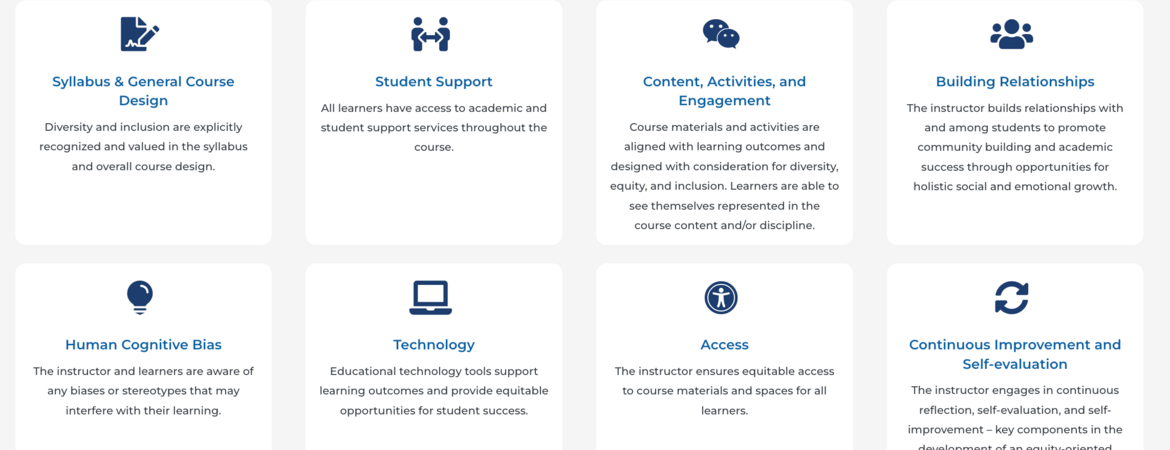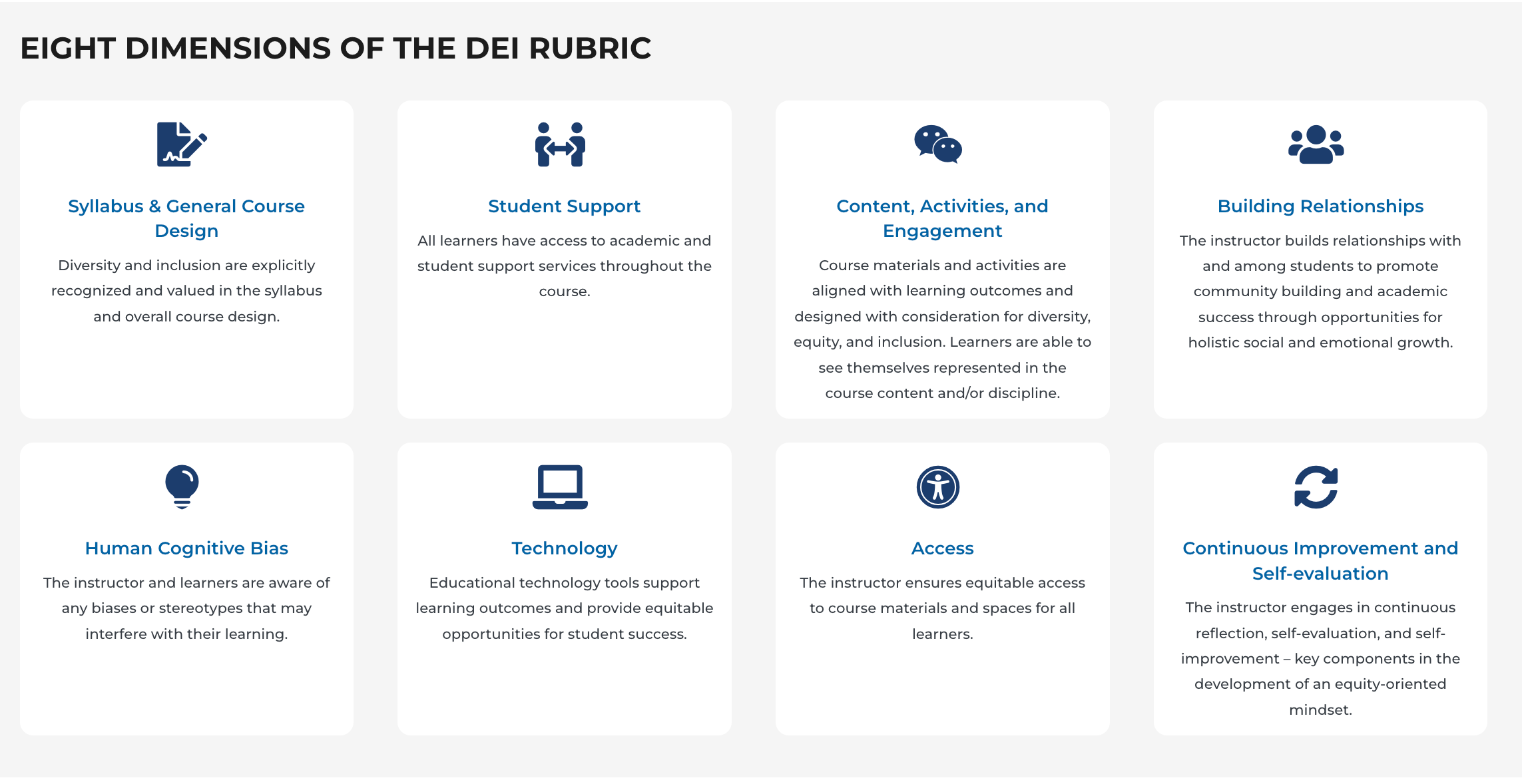Supporting Graduate Students' Academic and Professional Success

Have you wondered what teaching strategies you could implement as a Teaching Assistant (TA) in your discussion and laboratory sections to facilitate a more diverse, equitable, and inclusive learning environment? Or, have you already incorporated some techniques and are looking for next steps? We're here to help!
Graduate Division's TA Development Program are partnering with XCITE to offer a workshop on “Applying the UC DEI Rubric as a TA.” Dr. Swati Ramani (XCITE Faculty Development Specialist) and Dr. Anne Sullivan (TA Development Program Coordinator) will lead this hybrid (in-person and Zoom) workshop on Thursday, March 2, from 11:30 AM – 12:50 PM (80 minutes). A free lunch will be provided to in-person attendees in the XCITE Commons located in the Rivera Library.
[Image description: A circle alternates between various colors behind the phrase “You Belong Here.”]
Pictured: Everyone deserves to teach and learn in a community that fosters diversity, equity, and inclusion.
What is the UC DEI Rubric?
The UC Diversity, Equity, and Inclusion (DEI) Course Design Rubric guides instructors through “eight dimensions of course design,” as summarized on the University of California, Irvine website and pictured below.
[Image description: The UC Irvine website lists each of the eight dimensions in white boxes with dark blue icons. Syllabus & General Course design appears with a pen writing on paper; Student Support appears with arrows between two figures; Content, Activities, and Engagement appears with chat bubbles; Building Relationships appears with three figures; Human Cognitive Bias appears with a lightbulb; Technology appears with a laptop; Access appears with a figure in a circle; and Continuing Improvement and Self-evaluation appears with arrows moving in a circle.]
Pictured: Let’s reflect on the many dimensions of designing and teaching a course.
These eight dimensions, from “Syllabus & General Course Design” to “Content, Activities, and Engagement,” highlight how DEI strategies can shape both content and teaching methods. After defining each dimension, the rubric groups related action items into “now,” “next,” and “later” columns to help instructors approach the larger goal of making their courses more diverse, equitable, and inclusive through smaller concrete steps. However, instructors can adapt the rubric to their needs by beginning at any point that makes the most sense for their classroom. Kim DeBacco (Senior Instructional Designer, UCLA), one of the rubric’s co-authors, emphasized the rubric’s flexibility at an XCITE Teaching & Learning Week workshop this past Fall.
In October 2022, XCITE hosted a workshop called “The UC IDFS Diversity, Equity, & Inclusion (DEI) Rubric: Designing Your Course with DEI in Mind” led by some of the rubric’s co-authors, including Bo Choi (UCI), Kim DeBacco (UCLA), Samantha Eastman (UCR), and Fannie Tsai (UCI). A team of thirteen co-creators from the UC-wide Equity, Diversity, and Inclusion working group, a subcommittee of the Instructional Design & Faculty Support (IDFS) Community of Practice, began designing the DEI Rubric following the #BlackLivesMatter and #AAPI movements in 2020. The rubric’s latest version is the result of a multi-campus collaboration and multiple years of research, conference presentations, and revisions. However, as the rubric itself states, it is not a set of “exhaustive” instructions. Instead, it is a tool to “guide and focus discussion and decision-making.” The rubric’s “Introduction” continues to clarify that “[t]he rubric is currently in a pilot stage” and that users can participate in the revision process by submitting feedback.
[Image description: Two phrases, “Team Work” and “Dream Work,” alternate in yellow and pink letters on a maroon background.]
Pictured: The UC DEI Course Design Rubric is the result of teamwork and building from its suggested action items will require dreamwork, too.
Who is the workshop for?
The XCITE/TADP workshop is reserved for graduate students. Our aim is to support graduate students who want to discuss using diversity, equity, and inclusion (DEI) teaching strategies in their classroom spaces and/or who want to learn more about DEI and course design as they look ahead to job applications and future careers.
Teaching Assistants (TAs) navigate a particular set of challenges in college classrooms, in part because TAs experience varying degrees of autonomy in their course design depending on requirements determined by the subject matter, department, and the Instructor of Record. With those restrictions in mind, some of the items on the UC DEI Rubric may appear out of reach for some TAs at first glance. Writing a syllabus, for example, is standard for some discussion sections but perhaps not an option in others. One goal of this XCITE/TADP workshop is to talk through these challenges and to identify which steps can be taken now while also setting goals related to future teaching opportunities.
[Image description: A scene from NBC’s Sunnyside showing an aerial view of a group of people working together around a table with open notebooks and cups of coffee.]
Pictured: Who doesn’t love a chance to work together to identify our short- and long-term DEI goals?
What will we do in the XCITE/TADP workshop?
Rather than prescribe “best practices,” the workshop will focus on exploration, collaboration, and discussion. The workshop will begin with a free lunch for people who attend the workshop in person at XCITE Commons in the Rivera Library (limited to 25 people). Then, we’ll dive into discussing Diversity, Equity, and Inclusion (DEI) and the UC DEI Course Design Rubric. After a brief overview, we’ll break into small groups (both in-person and via Zoom breakout rooms). Participants will be invited to explore the UC DEI Rubric in their small groups and to identify steps they can take now as well as areas of the rubric where they face limitations or challenges in their roles as TAs. Small groups will then report back to the larger workshop, and part of our discussion will explore the difference in power dynamics between Instructors of Record and TAs when incorporating strategies from the DEI rubric into course design and daily instruction. Finally, we’ll have time to reflect on our short- and long-term goals and begin to identify the steps we want to take to achieve those goals.
How do I register?
This hybrid in-person and Zoom workshop will be held on Thursday, March 2, from 11:30 AM – 12:50 PM (80 minutes). A free lunch will be provided to registered in-person attendees in the XCITE Commons located in the Rivera Library. XCITE Commons has 25 seats, which will be filled on a first-come, first-serve basis. Here is the link to register for the workshop.
Sources
“Diversity, Equity, and Inclusion Course Design Rubric (DEI Rubric),” UC Irvine Division of Teaching, Excellence, and Innovation
“Diversity, Equity, and Inclusion Course Design Rubric,” UCR’s adaptation of the UC DEI Course Design Rubric and the UC, Irvine DTEI DEI Course Design Rubric, last updated October 25, 2022
“The UC IDFS Diversity, Equity, & Inclusion (DEI) Rubric: Designing Your Course with DEI in Mind,” XCITE Teaching & Learning Week, October 2022
